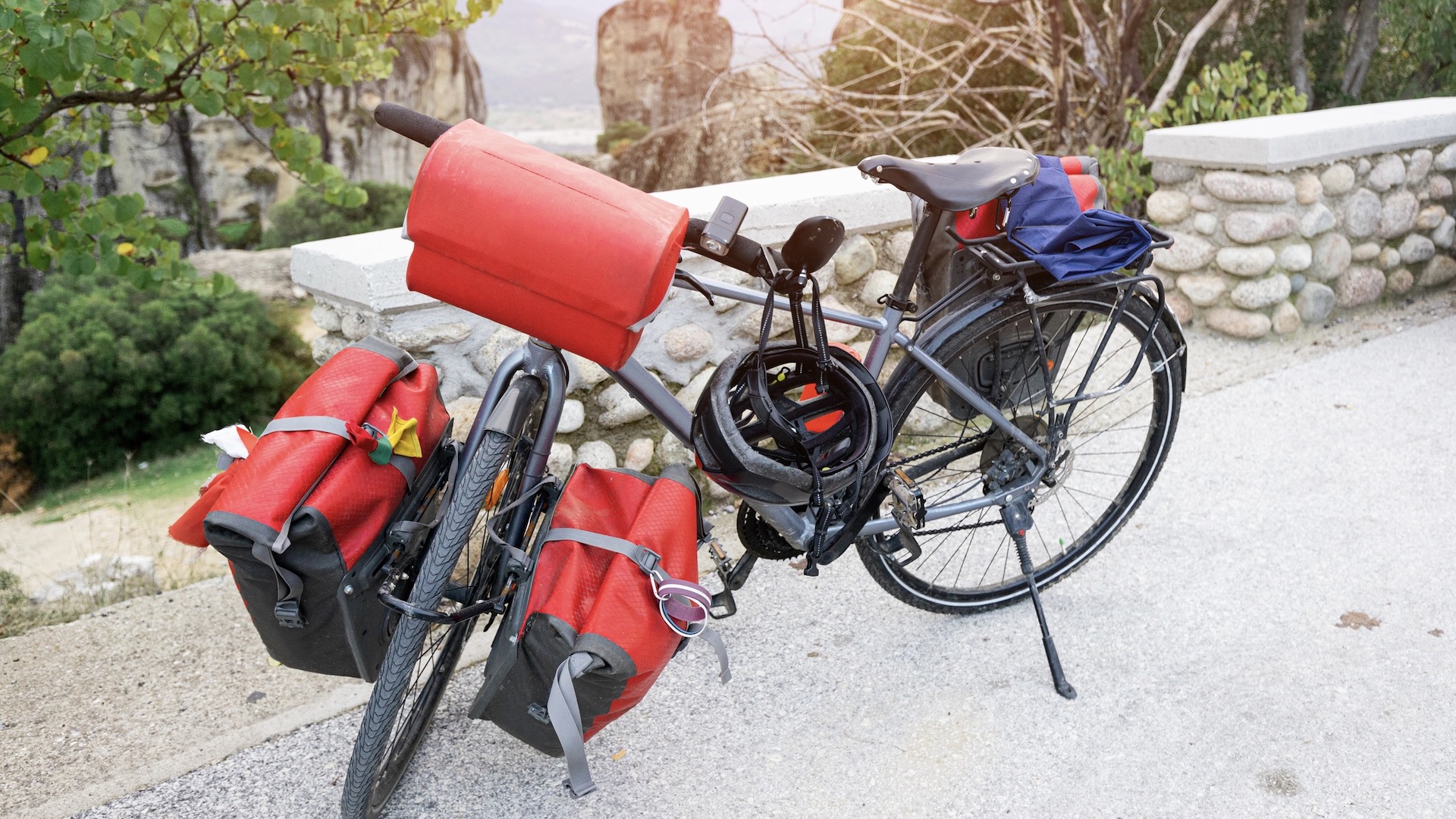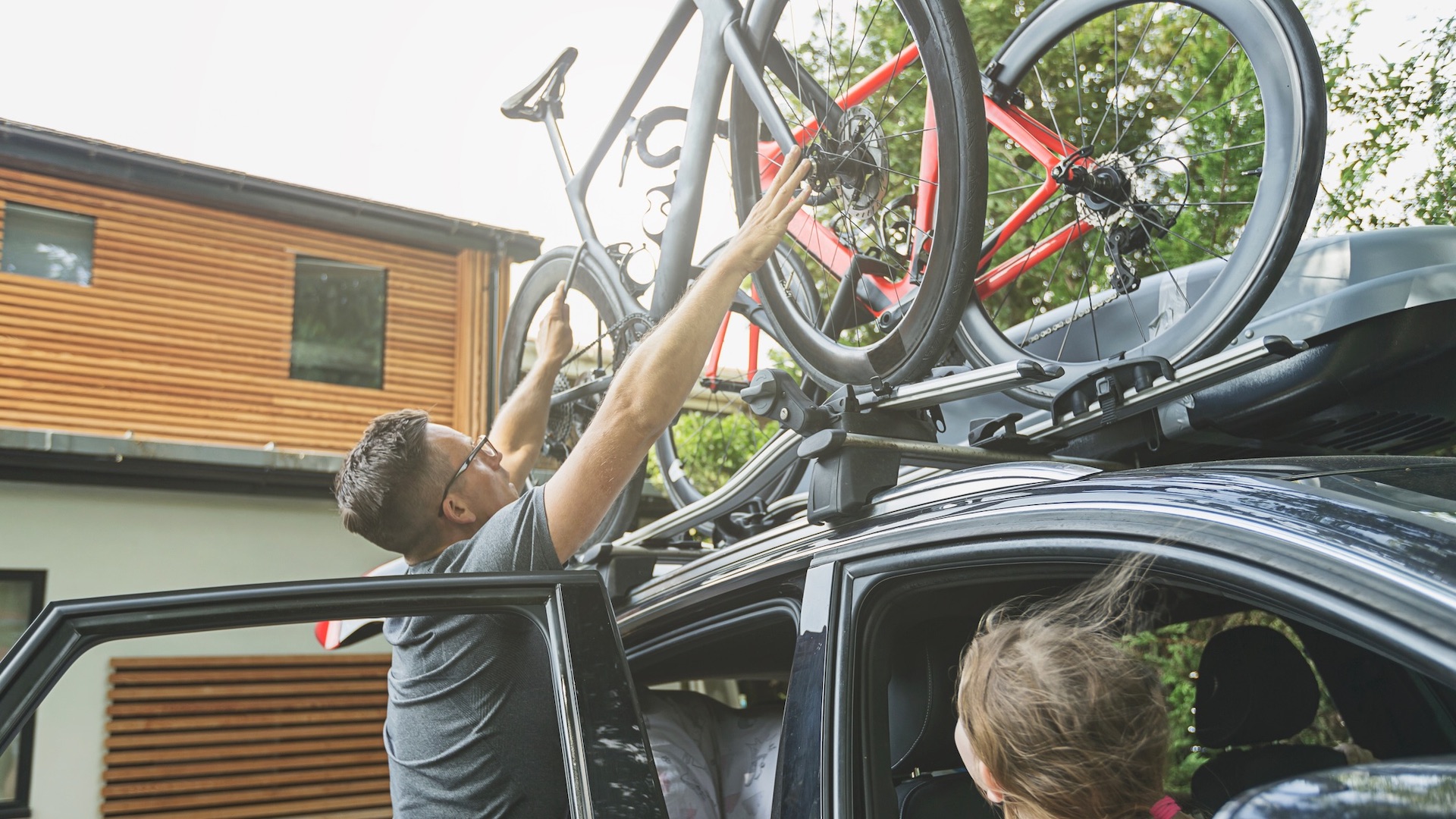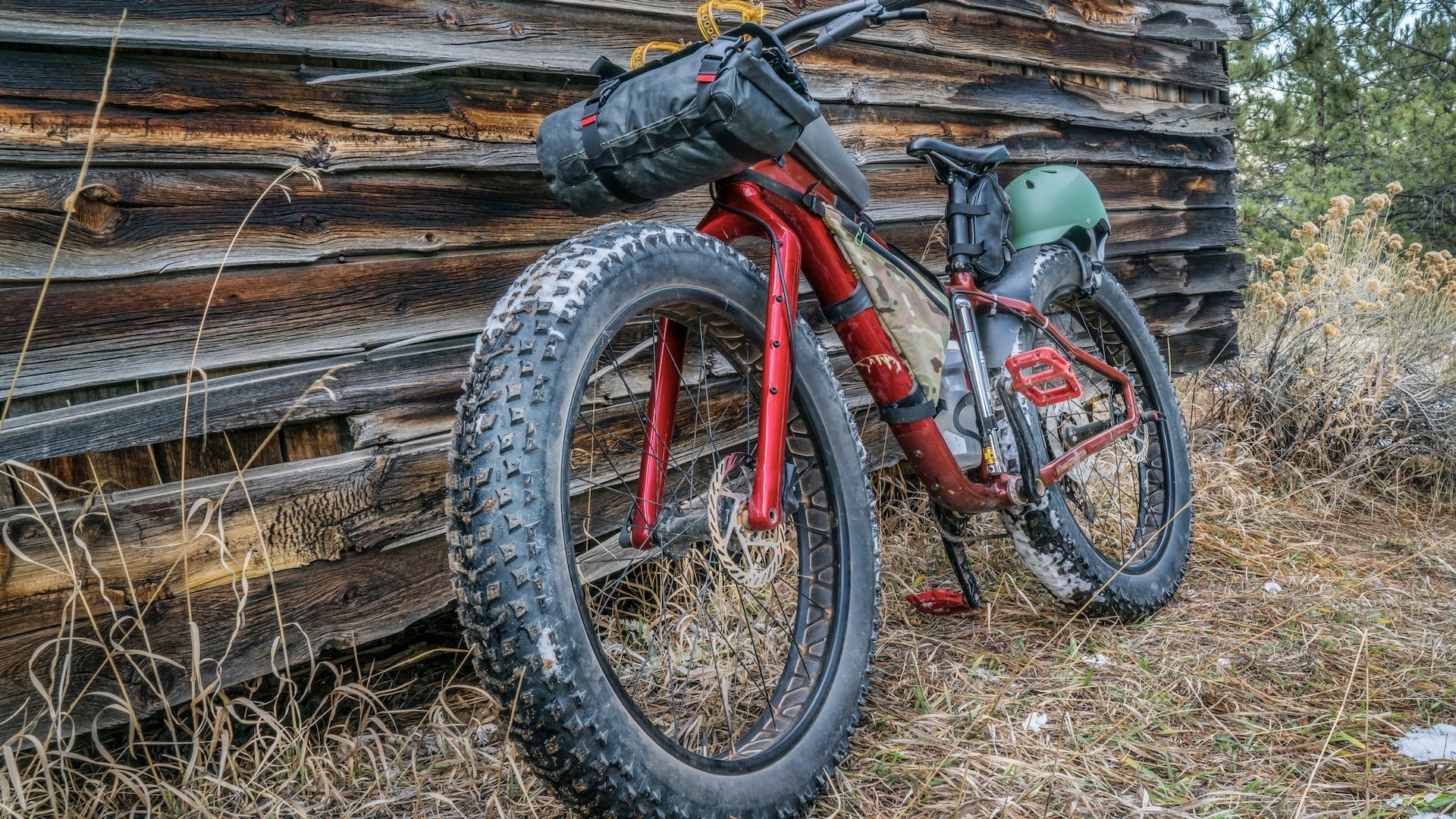
Should you choose to ride a carbon bike or one made of steel for bikepacking? Well, the answer to this question is, it depends!
Here, we'll weigh up the differences between carbon and steel or your adventures, with a particular focus on gravel riding, which is where many bikepacking trips will take you.

A weighty matter
One of the first differences cyclists consider between carbon bikes and steel bikes is weight. Carbon is lighter than steel, which means there's less weight to propel forwards by pedalling. A carbon bike usually feels much easier to accelerate, especially on flat terrain and hills.
It is important to also consider the weight of the bike if you need to lift it, for example, on to a roof rack.
The actual difference between equivalent carbon and steel-framed bicycles might only be around 1kg or so, but many riders still fret over these grams. Putting this sort of weight into perspective, however, many people can lose or gain 1kg of body weight in a short space of time, especially when exercising, and it might be better to focus on your own weight before thinking about what bike to buy.
Additionally, with careful packing, it could be easy to shave 1kg off the contents of your bikepacking bags, so the question of weight when choosing a bike frame might not be as important as you'd first think.
The feel of the bike
It's long been argued that steel-framed bikes are more forgiving and feel better to ride than carbon bikes. The background to this is that a carbon bike is stiff and can feel unforgiving, especially when set up for road cycling with narrow tires that are pumped to the max for speed.
But the modern gravel bike made of carbon is much likelier to be more comfortable to ride. Gravel bikes have wider tires, which offer greater suspension, plus a range of components and a geometry that aims to reduce the harsher ride that many associate with a stiff carbon frame.
It’s probably worth trying the different gravel bikes – one with a carbon frame and one with a steel frame – before making a purchase to see how they feel.

Longevity of the bikes
There's no arguing that steel bikes have greater durability and longevity than their carbon counterparts. If you are planning on a long distance bikepacking trip – perhaps something like Jenny Graham’s record breaking round the world cycle – then you’ll probably go for a steel bike. Jenny rode a customised steel Shand Stooshie bike.
Carbon frames, while light and strong, can be more prone to wear and also to sudden breakages. The last thing you want is a bike frame that has cracked.
One tip is to add bike frame protection, such as helicopter tape, to both carbon and steel frames to offer greater durability. This will reduce some of the wear and rubbing of a carbon bike from bags and straps, and help prevent issues with steel oxidizing and rusting.
When you add bikepacking bags, the argument for a steel frame grows. Steel is generally a stronger product that can withstand the weight and inevitable twists and imbalances of carrying loads better than carbon.
Look out for steel frames that include carbon forks. This is actually quite common and the forks have the same drawbacks as a fully carbon frame.

How much will you carry?
If you are the sort of person who overpacks or you are planning a long-distance bikepacking trip that requires a lot of kit then a steel bike is likely to be your best option. Steel can cope with much larger loads in general than a carbon frame.
You need to check what load each bike frame can cope with and also think about your own weight.
Pros and cons: carbon vs steel frames for bikepacking
There are several factors, as you have read, that may sway you to choosing a carbon frame over a steel frame or vice versa. Look at the bike’s overall weight, the components, geometry and comfort. Think about how much you will be carrying and where you plan to ride.
The biggest considerations will be how far you will be riding on a bikepacking trip and whether you will be able to access help if something goes wrong with the bike. This is the same consideration to quality of bike components.
Both steel bikes and carbon bikes come in a wide range of budgets, too.
If you are looking for more of a comfortable 'workhorse' and weight isn't too much of an issue, then a steel bicycle for bikepacking is a good choice. If you prefer a lighter bike that probably offers a better performance but which might suffer damage, such as during transit or transportation or in an accident, then a carbon is your better option.
There are always pros and cons of any purchase and in many ways it’s a good idea to try a bike (perhaps borrowed from a friend or hired), before you invest in one for your bikepacking adventures.







